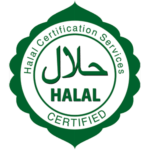TAIPEI (Taiwan News) — Answering the age-old question of what souvenirs to bring back from Taiwan, travel website TheRealTravelers has created a top 10 list of the best mementos to take home after a trip to country’s capital city of Taipei.
Many of the items listed can be found in one spot — the Taiwan Handicraft Promotion Center — near the National Taiwan University Hospital MRT Station. Another option is the National Palace Museum Shop, which sells replicas of items from its vast collection of treasures.
6. Chinese Paintings
Chinese painting, known in Mandarin as Guohua or “native painting” to distinguish it from Western styles which began to influence China in the 20th century, employs the same techniques as calligraphy and involves dipping a brush in black ink or colored pigments. There are two main techniques of Chinese painting: Gongbi (meticulous) and Ink and wash (water and ink). The former is a careful realist technique, while the latter is a more freehand style of watercolor painting.
One of the most popular subjects of Chinese painting is landscapes, and one way to get a permanent memento of the trip to Taiwan would be to buy a painting of a landscape in the Taiwanese countryside at the Taiwan Handicraft Promotion Center. The paintings are typically mounted on scrolls that can easily be rolled up and placed in a decorative box for easy transport in a suitcase or in a carry on bag. Prices will range from NT$300 and up.
7. Oil Paper Umbrellas
For Taiwan’s 4.2 million ethnic Hakka people, the umbrella is a symbol of prosperity and good fortune. The Hakka originally used these brightly colored umbrellas to offer protection from the rain and sun, a rite of passage for sons, and in wedding ceremonies.
They are now mainly collected as decorative items, and the best known place in Taiwan to buy them is actually the small town of Meinong in southern county of Kaohsiung. However, some may be found in older parts of Taipei, such as Huaxi Street Night Market and the Taiwan Handicraft Promotion Center sells mini oil paper umbrellas.
8. Jade
Chinese jade has been mined in China since the Neolithic era to the present. In Taiwan, the best place to buy jade is the Jianguo Holiday Jade Market. A cornucopia of carvings and jewelry can be found there, including Buddhas, mythical beasts, pendants, earrings, necklaces, and bracelets. Jade bracelets are worn by the local women to ward off evil, bring good fortune, and heal the body.
One of the most difficult things is to determining fake from real jade and both are often overpriced in the jade market, so it is best to bring a person who is knowledgeable about jade and be prepared to bargain. Prices will range from NT$300 for low-grade fake items to NT$10,000 and up for real jade pieces.
Take the MRT Red Line to the Da’an Park Station, walk out Exit 6 in the direction of the Jianguo Holiday Flower Market. Once outside, walk straight to the underpass and walk all the way through the walk the Flower Market. When exiting the flower market, the a sign for the Jianguo Holiday Jade Market will be visible.
9. Silk
Made by the larva of the domestic silkmoth, the earliest known example of silk fabric dates back to 3630 BCE and trade in the material began on the so-called Silk Road in during the Han Dynasty (207 BCE – 220 CE).
In Taipei, the best place to buy traditional silk clothing is at the Wufenpu Clothing Market, which is a collection of alleys with a covered roof housing dozens of small storefronts selling a wide variety of clothing and accessories. Prices will run from about NT$900 and up. The Wufenpu Clothing Market is walking distance from both the Songshan MRT station on the Green Line or the Houshanpi Station on the blue line.
The best place in Taipei to find silk fabric is the Yongle Fabric Market, inside which one can see a plethora of silk fabric colors and designs. From the MRT Green line, get off at Beimen station (北門) and walk north on Tacheng Street until it changes into Dihua Street. The market should be visible on the right side.
10. Rixing Typography
The Rixing Type Foundary has the distinction of having the last remaining collection of Chinese moveable type character molds in the world, continuing to employ techniques dating back to the Song Dynasty. Taipei’s last print foundry, it houses 120,000 molds of different characters and 10 million lead character pieces. Examples of items customers now print at the foundry include wedding invitations, Valentine’s cards, and business cards, including Taipei’s Mayor Ko Wen-je, who has his business cards printed at the shop.
Each piece takes around an hour to finish and costs between NT$3 to NT$50, based on size and design. The foundry’s owner, Chang Chieh-kuan, also occasionally provides tours of the shop.
Source: https://www.taiwannews.com.tw/en/news/3223162
Social Link:






